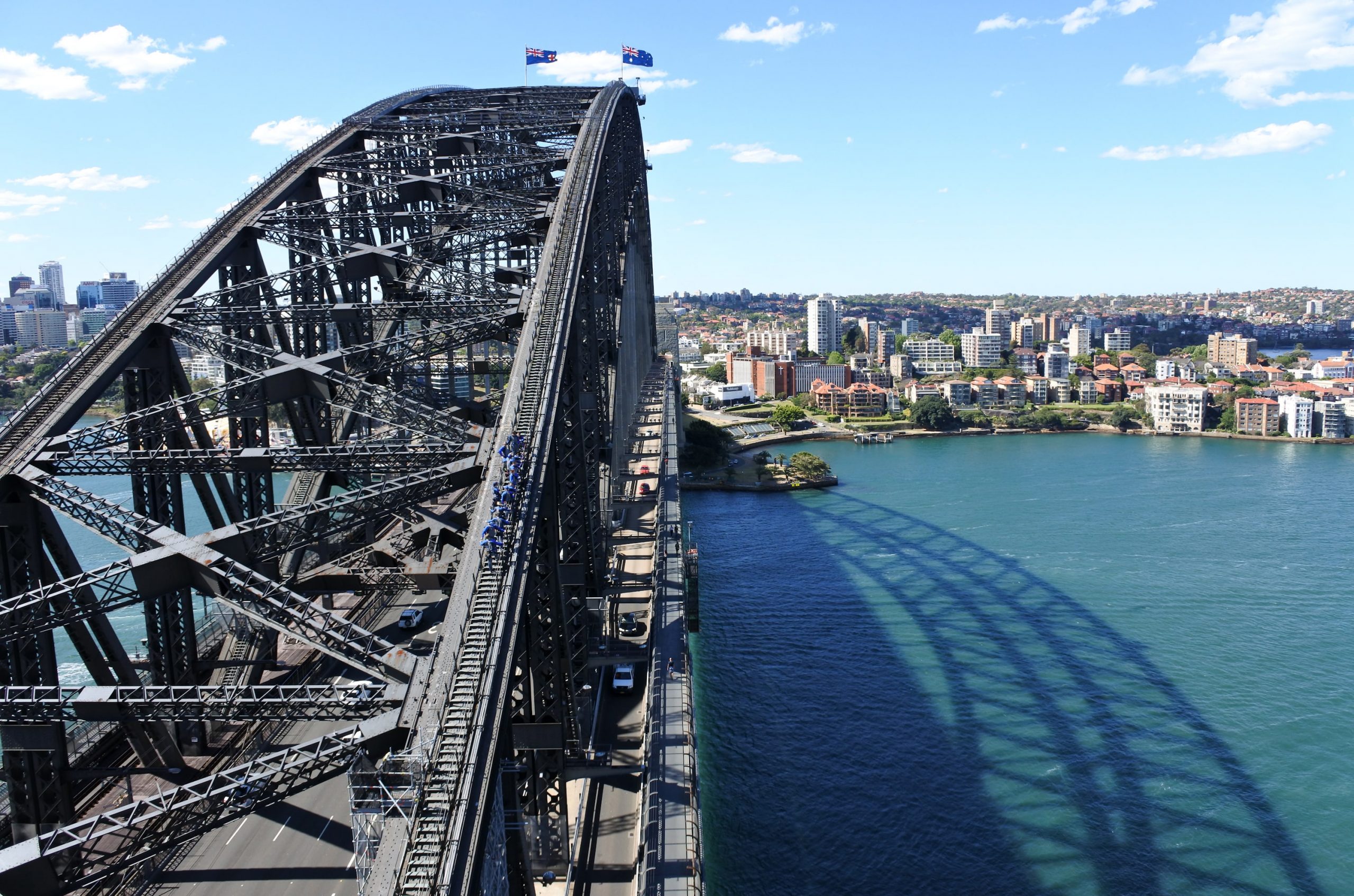Share This Article
It has been claimed that NSW Police “maintained a false assertion” that an ambulance with its sirens on was blocked from responding to an emergency during a climate protest on the Harbour Bridge.
Two of the four protestors accused of blocking the bridge during the April 2022 protest, Alan Glover and Karen Fitzgibbon, were recently sentenced at Downing Centre Local Court for their involvement.
Notably, the agreed facts tendered upon sentence in their matters noted that police now admit that “no ambulance was obstructed from responding to an emergency,” during the protest.
Magistrate Daniel Reiss sentenced Glover and Fitzgibbon to 18-month community corrections orders, as well as a $3,000 fine each.
The agreed facts differed significantly from those tendered by police during the matters of fellow protestors Deanna ‘Violet’ Coco and Jay Larbalestier.
The police facts in these matters alleged that the protest “prevented an ambulance responding to an emergency under lights and sirens as it was unable to navigate through the increased heavy traffic” as well as causing “serious disruption to peak-hour traffic”.
The police further stated that: “this imposition to a critical emergency service has the potential to result in fatality.”
Magistrate Reiss sought to question why the police had taken a “contradictory position” from the previous matters, with the prosecutor noting that the presence of the ambulance was “no longer pressed and hence it was removed from the agreed facts”.
The barrister representing Glover, Felicity Graham submitted that police had “maintained a false assertion” which was only remedied after the first two protestors were sentenced.
“Ms Coco and Mr Larbalestier were sentenced on that false basis and so there is a number of bases on which to consider that there would be an appropriate and different approach taken to Mr Glover’s case… It’s simply just not the case that that event occurred.” she said.
Jay Larbalestier was sentenced to a term of imprisonment by way of an intensive corrections order as well as a $7,196 fine.
He also spent more than 40 days on effective house arrest due to the strict bail conditions imposed.
Deanna ‘Violet’ Coco was sentenced to 15 months imprisonment, with a non-parole period of eight months. However, she is currently on bail, awaiting an appeal against the severity of her sentence, which is listed to be heard on 15 March 2023 before the Sydney District Court.
During her sentence in the Local Court, the ambulance was heavily referred to by Magistrate Allison Hawkins.
“You have halted an ambulance under lights and siren. What about the person in there? What about that person and their family? What are they to think of you and your cause? In fact, you do damage to your cause when you do childish stunts and dangerous stunts like this. It angers the community and rightfully so.” Hawkins noted.
Coco pleaded guilty to seven charges which includes counts of blocking entry to the Sydney Harbour Bridge, as well as resisting arrest and using or modifying an authorised explosive not as prescribed.
The protest involved one of the bridge’s five city-bound lanes being blocked for around 25 minutes by a truck, during morning peak hour, before officers were able to remove the protestors.
The truck was parked in the left-most lane, with Coco and Glover climbing on its roof and lighting flares. Fitzgibbon glued her hand to the roadway during the incident.
Coco was the first person to be sentenced under new ‘anti-protest’ laws in NSW.
Is Protesting on the Sydney Harbour Bridge an Offence?
The ‘Crimes Amendment (Major Facilities) Regulation 2022’ amended the Crimes Act 1900 (NSW) whereas the ‘Roads Amendment (Major Bridges and Tunnels) Regulation 2022’ amended the Roads Act 1993 (NSW) to introduce new offences.
As per section 214A of the Crimes Act 1900 (NSW),
Unless there is a reasonable excuse for doing so, it is prohibited for a person to do any of the following to any part of a ‘major facility’:
- enter,
- remain on or near,
- climb,
- jump from,
- trespass on, or
- block entry.
This is amounts to a criminal offence if it:
- causes damage to the major facility,
- seriously disrupt or obstruct persons attempting to use the major facility,
- cause the major facility, or part of the major facility, to be closed, or
- cause persons attempting to use the major facility to be redirected.
Section 214A of the Crimes Act 1900 (NSW) prescribes a maximum penalty of 2 years imprisonment and/or $22,000 fine.
‘Major facilities’ are defined to include:
- Railway stations or other public transport facilities, including ferry terminals,
- Ports, including Sydney Cove Passenger Terminal,
- Infrastructure facilities, which include distribution centres, power stations, and airports.
Section 144G of the Roads Act 1993 (NSW) criminalises the same conduct with respect to the Sydney Harbour Bridge or any other major bridge, tunnel, or road, if it:
- causes damage to the bridge, tunnel, or road, or
- seriously disrupts or obstructs vehicles or pedestrians attempting to use the bridge, tunnel, or road.
This offence carries a maximum penalty of a fine of $22,000 and/or 2 years imprisonment.
A person will be taken to have ‘seriously disrupted or obstructed’ traffic if the bridge, tunnel, or road must be closed or vehicles or pedestrians are redirected.
A major bridge, tunnel, or road is defined to include a main road, a highway, a freeway, a tollway, or a bridge, or tunnel joining any of the aforementioned roads, or one located in the Greater Sydney Region, the City of Newcastle, or the City of Wollongong.
Defences are provided under both types of offences outlined above if a person has a reasonable excuse for the conduct, or it is part of an industrial action, industrial dispute, or industrial campaign. Furthermore, a person cannot commit the offence if the conduct occurs at the workplace at which the person works.
Authorisation may be provided by the NSW Police Force, another public authority, the owner/operator of the facility (in the case of a privately owned facility), or Transport NSW (in the case of a public bridge, tunnel, or road).
By Alyssaa Maschmedt and Jimmy Singh.









